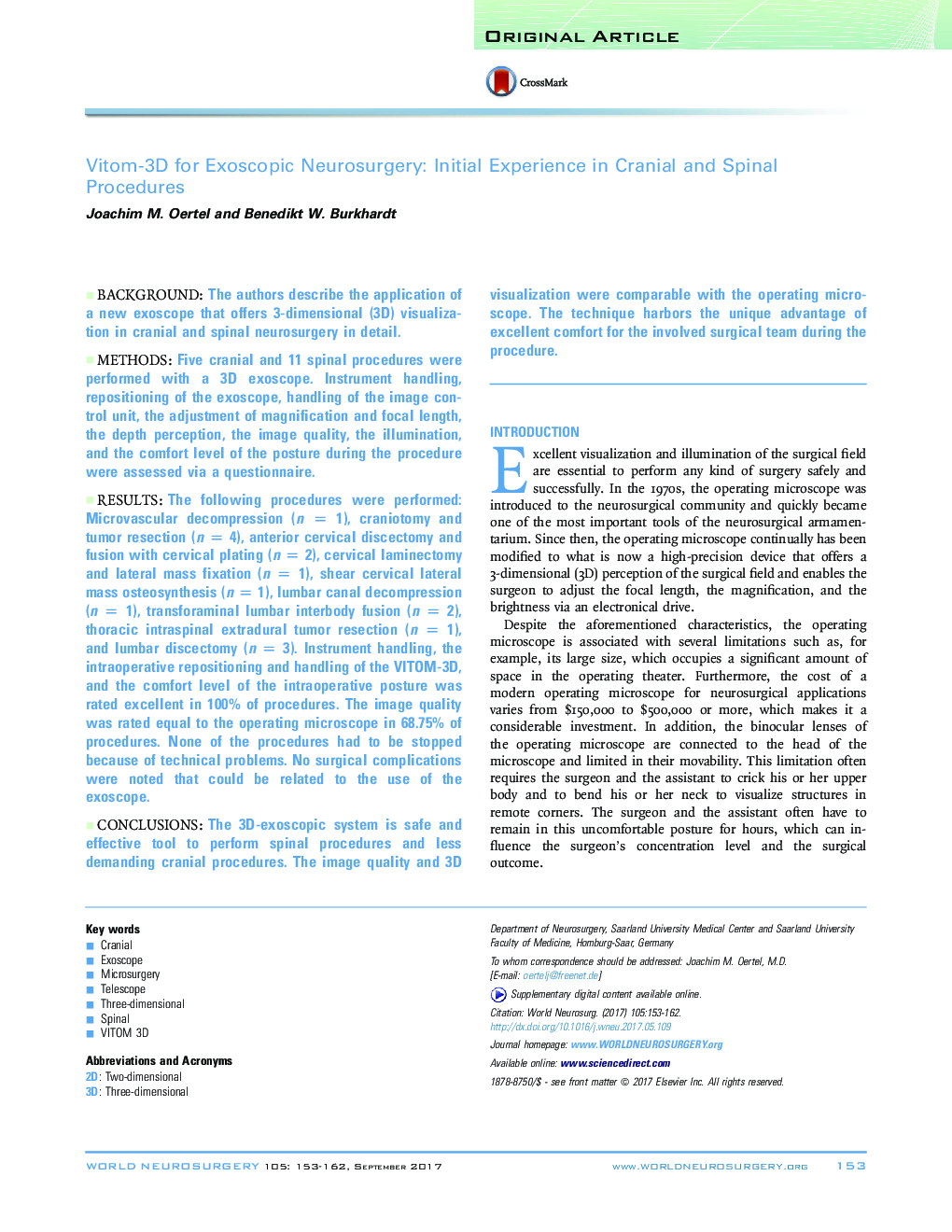| Article ID | Journal | Published Year | Pages | File Type |
|---|---|---|---|---|
| 5634199 | World Neurosurgery | 2017 | 10 Pages |
BackgroundThe authors describe the application of a new exoscope that offers 3-dimensional (3D) visualization in cranial and spinal neurosurgery in detail.MethodsFive cranial and 11 spinal procedures were performed with a 3D exoscope. Instrument handling, repositioning of the exoscope, handling of the image control unit, the adjustment of magnification and focal length, the depth perception, the image quality, the illumination, and the comfort level of the posture during the procedure were assessed via a questionnaire.ResultsThe following procedures were performed: Microvascular decompression (n = 1), craniotomy and tumor resection (n = 4), anterior cervical discectomy and fusion with cervical plating (n = 2), cervical laminectomy and lateral mass fixation (n = 1), shear cervical lateral mass osteosynthesis (n = 1), lumbar canal decompression (n = 1), transforaminal lumbar interbody fusion (n = 2), thoracic intraspinal extradural tumor resection (n = 1), and lumbar discectomy (n = 3). Instrument handling, the intraoperative repositioning and handling of the VITOM-3D, and the comfort level of the intraoperative posture was rated excellent in 100% of procedures. The image quality was rated equal to the operating microscope in 68.75% of procedures. None of the procedures had to be stopped because of technical problems. No surgical complications were noted that could be related to the use of the exoscope.ConclusionsThe 3D-exoscopic system is safe and effective tool to perform spinal procedures and less demanding cranial procedures. The image quality and 3D visualization were comparable with the operating microscope. The technique harbors the unique advantage of excellent comfort for the involved surgical team during the procedure.
